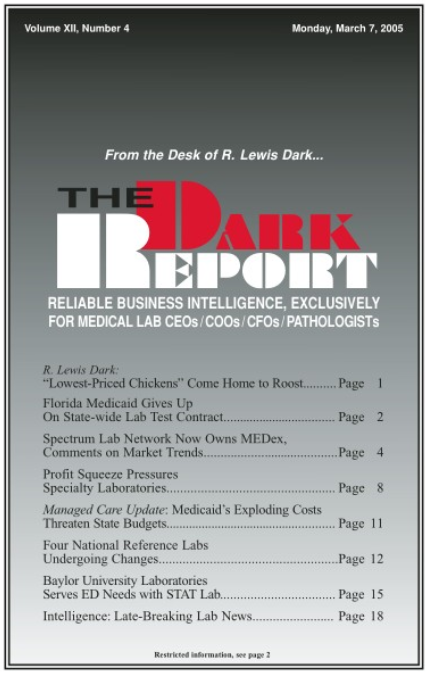It was good news for the nine-year old boy with the rare brain tumor he named “Frankstein.” On midnight, Monday, February 14, 2005, the family received a telephone call from the surgeon who performed the biopsy on February 2, 2005. He confirmed that the biopsy was negative for cancer. What is interesting about the lengthy …
“March 7, 2005 Intelligence: Late Breaking Lab News” Read More »
To access this post, you must purchase The Dark Report.


